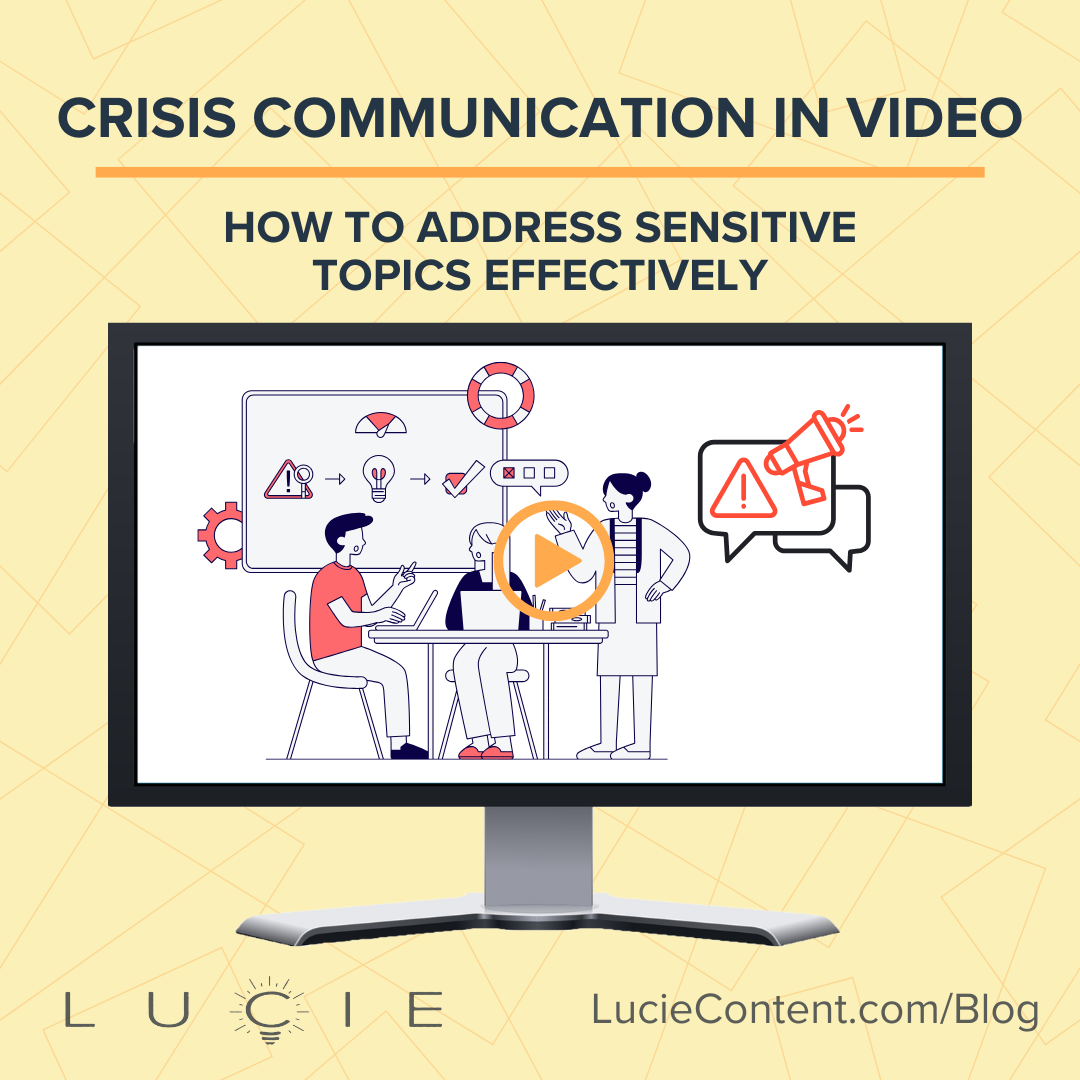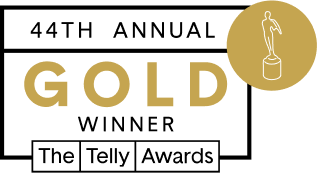What is Crisis Communication in Video?
Crisis communication in video is the strategic use of visual storytelling to address challenging situations, sensitive topics, or difficult circumstances while maintaining trust, transparency, and brand integrity. It requires careful planning, authentic messaging, and professional execution to navigate complex communications effectively.
The phone call always comes at the worst possible time. A client needs to address a serious issue publicly, and they need to do it through video. Maybe it’s a product recall, a workplace incident, or industry-wide challenges affecting their business. The stakes couldn’t be higher, and there’s no room for mistakes.
Working with companies across Atlanta and beyond, we’ve learned that the difference between a video that rebuilds trust and one that damages it further often comes down to decisions made before the cameras even start rolling.
When everything is on the line, intuition fails. Even the most well-intentioned leaders can make choices that seem right in the moment but create bigger problems down the road. That’s why crisis communication requires a completely different approach than standard corporate video production.
The High Stakes of Getting It Wrong
Crisis communication videos live forever on the internet. Unlike a written statement that might get buried in search results, video content has staying power. We’ve seen companies spend years rebuilding their reputation after a single poorly executed crisis video went viral for all the wrong reasons.
What makes this particularly challenging is that during a crisis, everyone feels the pressure to respond quickly. Speed becomes the enemy of thoughtfulness, and thoughtfulness is exactly what these situations demand most.
Our production team has worked with organizations facing everything from data breaches to workplace safety incidents. What we’ve discovered is that the companies that weather these storms best are the ones that resist the urge to rush. They understand that taking an extra day to get the message right is worth more than being first to respond incorrectly.
The Foundation: What Goes Into Professional Crisis Communication
When clients come to us during challenging times, the first thing we do isn’t set up cameras. We sit down and map out what success actually looks like. This planning phase often takes longer than the actual production, and there’s a good reason for that.
Message Architecture First
Every word matters in crisis communication. Our team works with clients to identify not just what they want to say, but how different audiences will hear those words. What sounds like accountability to one group might sound like admission of guilt to another. What feels like transparency to leadership might come across as defensive to the public.
We’ve learned that the most effective crisis videos address three fundamental questions in order: What happened? What are you doing about it? How will you prevent it from happening again? The sequence matters because it mirrors how people process difficult information.
Audience Segmentation Strategy
During a crisis, you’re never speaking to just one audience. Employees need different information than customers. Investors have different concerns than community members. Regulatory bodies require different levels of detail than the general public.
Our Atlanta video production services often involve creating multiple versions of the same core message, each tailored to specific stakeholder groups. This isn’t about changing the facts. It’s about emphasizing the elements that matter most to each audience while maintaining consistency across all communications. Understanding your audience is crucial for effective brand communication, especially during sensitive situations.
Visual Storytelling Decisions
The visual choices in crisis communication videos carry enormous weight. Should the CEO speak from their office or a more neutral setting? Does the background convey authority or approachability? Should there be B-roll footage or is talking directly to camera more appropriate?
These decisions impact how the message is received just as much as the words themselves. Our cinematography team has developed specific approaches for different types of crisis communications, understanding that the visual language needs to support the verbal message, not compete with it.
Industry-Specific Challenges We’ve Navigated
Healthcare and Patient Safety
Healthcare organizations face unique challenges when addressing patient safety incidents or public health concerns. The balance between transparency and patient privacy requires careful navigation. We’ve worked with medical facilities to create videos that acknowledge serious issues while maintaining compliance with healthcare regulations.
The key insight we’ve gained from healthcare crisis communication is that medical professionals often want to provide more technical detail than general audiences can process. Our role becomes translating complex medical situations into clear, accessible language while preserving accuracy. Day in the life videos can help humanize healthcare organizations and build trust even before crisis situations arise.
Financial Services and Data Security
When financial institutions experience data breaches or security incidents, the crisis communication must address both immediate concerns and long-term trust rebuilding. These videos require a particularly careful balance of accountability and confidence.
Our team has learned that financial services crisis videos work best when they focus on specific actions being taken rather than general assurances. Audiences want to know exactly what steps are being implemented to protect their information going forward.
Manufacturing and Product Safety
Product recalls and safety issues create crisis communication challenges that often extend beyond immediate customers to include regulatory bodies, distributors, and sometimes entire industries. The complexity increases when technical explanations are necessary but must remain accessible to non-technical audiences.
The Production Elements That Make the Difference
Location and Setting Psychology
Where you film a crisis communication video sends a message before anyone speaks a word. We’ve found that the most effective locations feel appropriate to the situation without being overly formal or casual. A CEO addressing a workplace safety issue from their corner office might seem disconnected, while speaking from the factory floor could appear exploitative.
Our location scouting for crisis videos considers factors that don’t typically matter in standard video marketing. How will this space be perceived by different stakeholder groups? Does the setting support or undermine the key messages? Will the location still feel appropriate if the situation evolves?
Pacing and Information Delivery
Crisis communication videos require different pacing than typical business content. People processing difficult information need time to absorb each point before moving to the next. This means building in natural pauses, using shorter sentences, and structuring information in digestible segments.
Our editing approach for crisis videos prioritizes clarity over engagement metrics. While we want people to watch the entire message, we’re more concerned with ensuring they understand and trust what they’re hearing.
Authenticity Versus Polish
There’s a delicate balance between looking professional and appearing overly produced during a crisis. Too much polish can make leadership seem disconnected from the seriousness of the situation. Too little production value can undermine credibility.
Working at Lucie Studios, we’ve discovered that authenticity in crisis communication comes from emotional honesty, not production choices. The most effective crisis videos feel genuine because the speakers are genuinely addressing the situation, not because they’re deliberately unpolished.
Timing and Distribution Strategy
The 24-Hour Window
While we always advocate for taking time to craft the right message, there’s usually a practical window within which organizations need to respond publicly. Our production team has developed streamlined workflows that can deliver high-quality crisis communication videos within 24 hours when necessary.
This rapid turnaround capability requires having key elements pre-planned. Our content grab process helps organizations prepare comprehensive content strategies that can be adapted quickly when crisis situations arise.
Platform-Specific Adaptations
Crisis communication videos often need to live across multiple platforms, each with different technical requirements and audience expectations. A video designed for the company website might need shorter versions for social media, or longer versions for stakeholder presentations.
Our distribution strategy considers how the same message will be received differently across various channels. What works on LinkedIn might not be appropriate for TikTok, even if the core message remains consistent.
Common Pitfalls We Help Clients Avoid
Over-Explaining Technical Details
During a crisis, technical experts often want to provide comprehensive explanations of what went wrong and how it’s being fixed. While this information is important, it can overwhelm audiences who primarily want to know if they’re safe and what actions they should take.
Our role often involves helping clients identify which technical details support their key messages and which ones create confusion. The goal is providing enough information to build confidence without creating information overload.
Underestimating Emotional Impact
Organizations sometimes focus so heavily on facts and solutions that they fail to acknowledge the emotional impact of the situation on affected parties. This can make even well-intentioned messages feel cold or disconnected.
We’ve learned that acknowledging the human impact of a situation early in the message creates space for audiences to hear the factual information that follows. People need to feel heard before they’re ready to listen to solutions.
Inconsistent Messaging Across Spokespersons
When multiple people need to speak about a crisis situation, ensuring consistent messaging becomes crucial. Small variations in how different spokespersons describe the same situation can create confusion or undermine credibility.
Our video production process includes message alignment sessions when multiple speakers are involved, ensuring everyone is delivering complementary information rather than contradictory details.
The Long-Term Perspective
Crisis communication videos are often just the beginning of a longer reputation management process. The most successful organizations treat these videos as the first step in rebuilding trust, not as one-time fixes.
Our team works with clients to develop follow-up communication strategies that provide updates on progress and demonstrate ongoing commitment to addressing the issues raised during the crisis. This might involve quarterly progress reports, employee testimonial videos, or case studies showing improved processes.
Building Crisis Communication Capabilities Before You Need Them
The organizations that handle crisis communication most effectively are the ones that prepare for it in advance. This means developing key message frameworks, identifying potential spokespersons, and establishing production workflows before a crisis occurs.
Our consulting approach often includes crisis communication preparedness as part of broader video strategy development. Having these elements in place allows for much faster and more effective responses when challenging situations arise.
Just as updating your website regularly keeps your digital presence current, maintaining crisis communication readiness ensures you’re prepared for unexpected challenges.
When Professional Production Makes the Difference
Crisis communication videos carry higher stakes than any other type of business content. The margin for error is smaller, the scrutiny is greater, and the long-term impact is more significant. This is exactly when professional video production services provide the most value.
The technical expertise, strategic planning, and production experience that go into effective crisis communication can’t be replicated with smartphone cameras and good intentions. When everything is on the line, the investment in professional production pays dividends in preserved relationships and protected reputation.
At Lucie Content, we understand that crisis communication isn’t just about creating videos. It’s about helping organizations navigate some of their most challenging moments while preserving what they’ve worked years to build.
Ready for Whatever Comes Next?
None of us can predict when challenging situations will arise, but we can prepare for how to respond when they do. The difference between organizations that emerge stronger from crises and those that suffer lasting damage often comes down to the quality of their communication during those critical moments.
If your organization wants to develop crisis communication capabilities before you need them, or if you’re currently facing a situation that requires immediate attention, our Atlanta-based team is ready to help. Contact Lucie Content to discuss how professional crisis communication can protect and preserve what matters most to your organization.
Frequently Asked Questions
Q: How quickly can you produce a crisis communication video? A: Our streamlined crisis communication workflow can deliver professional-quality videos within 24 hours when necessary. However, we always recommend taking time to ensure the message is right rather than rushing to be first.
Q: Should crisis communication videos address all stakeholder groups in one message? A: We typically recommend creating tailored versions for different audiences while maintaining consistent core messaging. Employees, customers, and investors often need different levels of detail and emphasis.
Q: What’s the most important element of effective crisis communication videos? A: Authenticity and emotional honesty are crucial. Audiences can detect when leaders aren’t genuinely addressing the situation, which undermines trust more than any production choice.
Q: How do you balance transparency with legal considerations? A: We work closely with clients’ legal teams to ensure all communications meet regulatory requirements while still providing meaningful information to stakeholders. This collaboration is essential for effective crisis communication.












